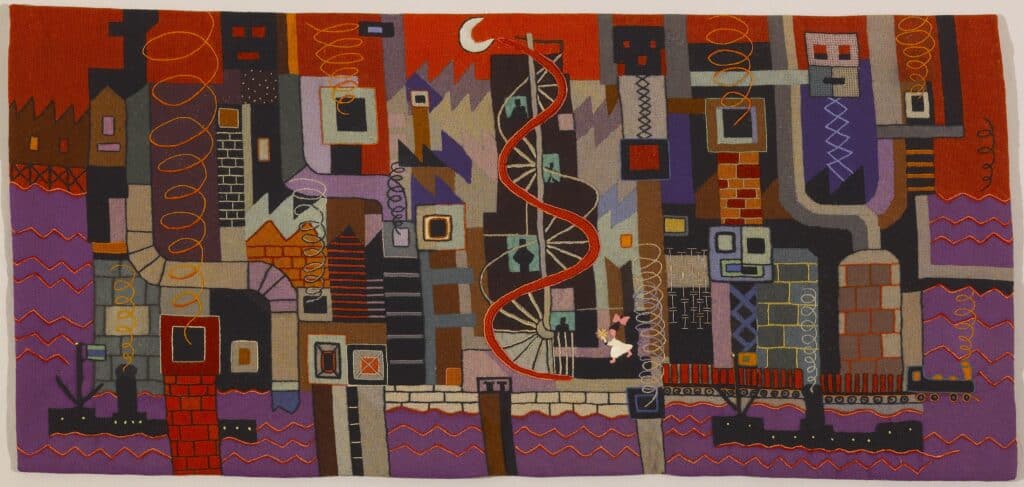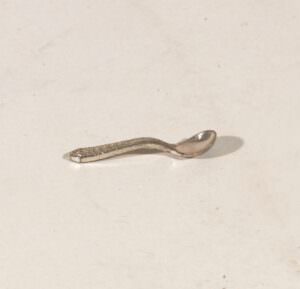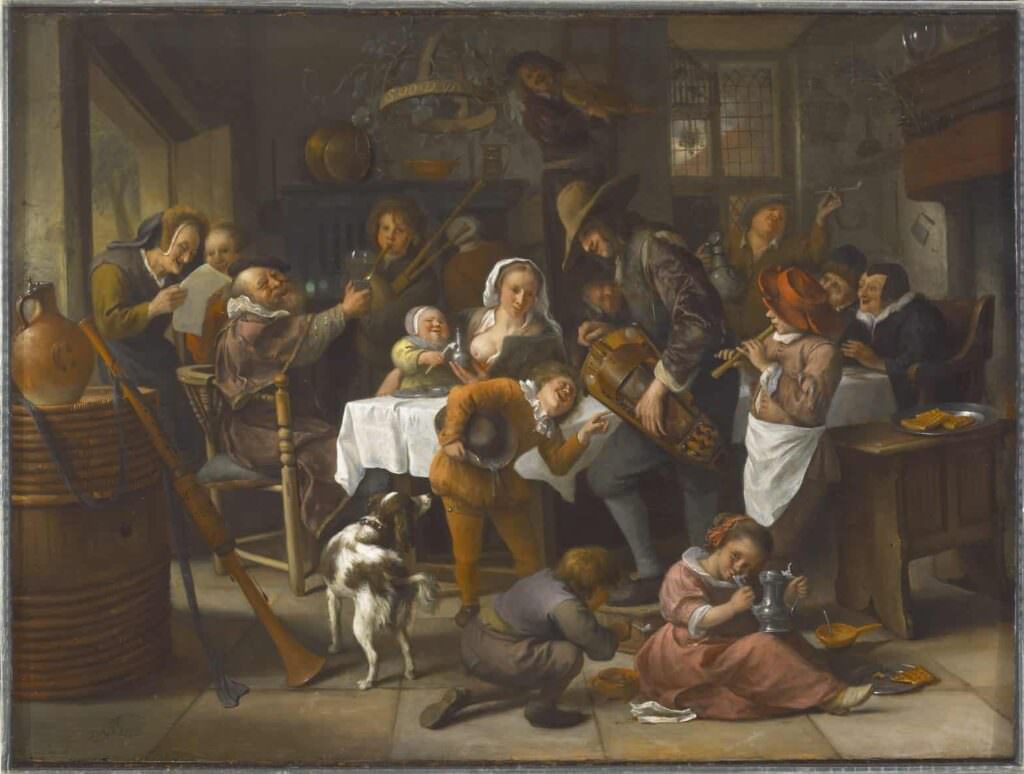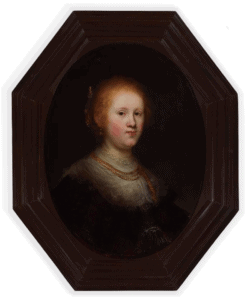What’s the weirdest object in your collection? Is your museum haunted? These are just a few questions that have been asked on Ask a Curator Day. We asked you to submit questions to Allentown Art Museum’s curator Claire McRee. Here are her answers:
I have been going to the Allentown Art Museum for over 50 years now and I have a most favorite piece of art there. If you could only pick one item of art, what would be your most favorite in the museum and why, why does it speak to you so much?
I love that the person who asked this question has been coming for five decades and has found a piece that really speaks to them. This is a hard question! I get to work with so many different, wonderful works of art and my favorite changes all the time. Currently I would say Mildred Johnstone’s Alice in a Wonderland of Steel. Johnstone was married to an executive at Bethlehem Steel, and frequently went on tours of the plant. In the late 1940s she began to create large embroideries that depicted subjects such as blast furnaces and steel workers, in a graphic and modern style. I love that she uses needlework, a traditionally feminine art form, to depict this male-dominated subject of industry. She’s not well known outside of this area, but deserves greater recognition both because of the caliber of her work and its relevance to national conversations about industry, modern life, and the use of fiber as a fine art medium.

Mildred T. Johnstone (American, 1900-1988) with designer Pablo Burchard (Chilean, 1875-1964), Alice in a Wonderland of Steel, 1949, linen plain weave with wool, angora and metallic thread (Lurex) tent stitch, stem stitch, French knots, straight stitch, and satin stitch embroidery. Gift of Mildred T. Johnstone, 1977. (1977.19.2)

American or European, Tiny Spoon from Miniature Silver Service Set, ca. 1800s, silver. The Morris, Lena and Beryl (Oppenheimer) Senderowitz Collection, a gift from Roland & Doris Sigal, 1999. (1999.6.55)
What is your smallest/largest/heaviest art piece?
Our heaviest artworks would be the pair of bronze sculptures by Jean-Léon Gérôme, which are over 7 feet tall and currently on display in the Arts Park. You can learn more about them on our Arts Crawl!
Walking God is our largest painting at 7 by 18 feet, and was made in 1975 by Eric Rudd.
We have lots of small objects! The smallest I could find is a spoon from a miniature silver service, measuring 3/4 x 3/16 inches. Most of the objects in this 64-piece silver service are under 2 inches in size, and include tankards, cake baskets, and a serving dish shaped like a Viking ship.
Which collection has the most pieces?
The largest area of our collection would be costume and textiles, with over 8,000 works.
Which piece has traveled or been borrowed the most?
Our most well-traveled work is Jan Steen’s As the Old Sing, So Pipe the Young, which has been displayed in eleven exhibitions outside of our museum in just the past century. It’s visited nine other states and has been to London three times!

Jan Steen (Dutch, 1626-1679), Soo de Ouden Songen, Soo Pijpen de Jongen (As the Old Sing, So Pipe the Young), ca. 1668, oil on panel. Samuel H. Kress Collection, 1961. (1961.60)

Rembrandt van Rijn (Dutch, 1606-1669), Portrait of a Young Woman, 1632, oil on panel. Samuel H. Kress Collection, 1961. (1961.35)
Which has garnered the most controversy or the most press?
Rembrandt’s Portrait of a Young Woman has been a hot topic in recent years! In 1970, a group of scholars known as the Rembrandt Research Project (RRP) removed the painting from the canon of the master, stating it was more likely the work of another artist in Rembrandt’s studio. However, cleaning and conservation work in 2018–2019 revealed new evidence that prompted its reattribution to Rembrandt himself—a story that was covered by national and international news outlets. Portrait of a Young Woman recently returned from a summer trip to Canada for the exhibition Rembrandt in Amsterdam: Creativity and Competition, and she will be back in our galleries later this fall in Rembrandt’s Return: A Complement of Prints.

